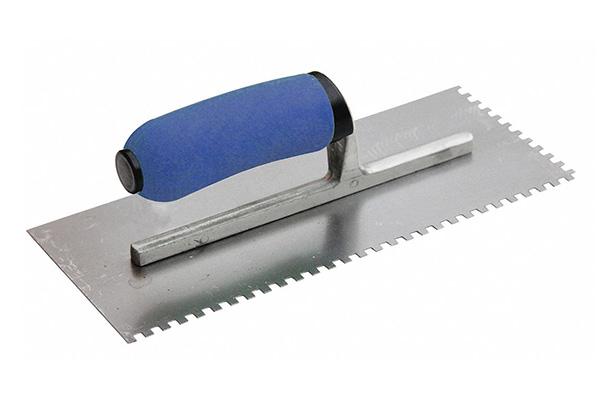When installing tile, whether on a floor, wall, or countertop, one of the most important tools you’ll use is the notched trowel. This simple hand tool plays a crucial role in ensuring that tiles are installed evenly and securely. But with so many different sizes and shapes of notched trowels available, a common question arises: What size notched trowel should I use?
The answer depends on several factors, including the size of the tile, the type of material, and the surface you’re working on. This article will guide you through the basics of notched trowels and help you choose the right one for your tile installation project.
What Is a Notched Trowel?
A notched trowel is a flat-bladed tool with a handle and a series of notches cut into one or more sides of the blade. These notches create ridges in the adhesive (usually thinset mortar) when it is spread over a surface. The size and shape of these ridges affect how much adhesive is applied, how well the tile sticks, and how level the finished surface will be.

There are two common types of notches:
-
Square notch: Produces square-shaped ridges of adhesive. Best for floors and large-format tiles.
-
V-notch: Produces V-shaped ridges. Often used for small wall tiles and mosaics.
Choosing the Right Notched Trowel Size
The general rule is: The larger the tile, the larger the trowel notch. Here’s a breakdown of common tile sizes and the recommended trowel sizes:
1. Small Tiles (Mosaics, 4″ x 4″ or smaller)
-
Recommended trowel size: 1/4″ x 1/4″ square notch or 3/16″ x 5/32″ V-notch
-
Why? Small tiles need less adhesive, and a smaller notch ensures even coverage without too much excess.
2. Medium Tiles (6″ x 6″ to 12″ x 12″)
-
Recommended trowel size: 1/4″ x 3/8″ square notch
-
Why? Medium-sized tiles require more adhesive to allow full coverage and prevent lippage (uneven tile heights).
3. Large Format Tiles (13″ x 13″ and up)
-
Recommended trowel size: 1/2″ x 1/2″ square notch or larger
-
Why? Larger tiles need more adhesive coverage to support their weight and surface area, especially for floor installations.
4. Rectangular and Plank Tiles
-
Recommended trowel size: 1/2″ x 1/2″ or even 3/4″ x 3/4″ square notch
-
Why? Longer tiles may need more adhesive and better leveling due to potential bowing or warping.
Factors That Affect Trowel Size Selection
Beyond tile size, several other factors may influence your trowel choice:
Surface Flatness
If the substrate (floor or wall) is not perfectly flat, you may need a larger notched trowel to ensure full adhesive contact. This helps prevent hollow spots under the tile.
Type of Adhesive
Thicker adhesives may require larger notches to spread properly. Always refer to the adhesive manufacturer’s guidelines.
Tile Material
Heavier materials like natural stone or porcelain may require more adhesive to ensure a strong bond, meaning a larger trowel notch is preferred.
How to Check for Proper Coverage
Using the correct trowel size ensures at least 80–95% adhesive coverage on the back of each tile. To check:
-
Press a tile into place and lift it back up.
-
Inspect the back. If it’s mostly covered in thinset with minimal voids, you’re using the right trowel.
If too much of the tile is bare or the ridges aren’t fully flattened, switch to a larger notch.
Conclusion
Selecting the right notched trowel size is crucial for a successful tile installation. While tile size is the main guide, don’t forget to consider surface conditions, tile material, and the adhesive being used. Taking the time to choose the correct trowel will ensure better bonding, fewer tile failures, and a smooth, even finish.
In tile work, the details matter—and the size of your notched trowel is one detail that makes all the difference.
Post time: Jun-18-2025






